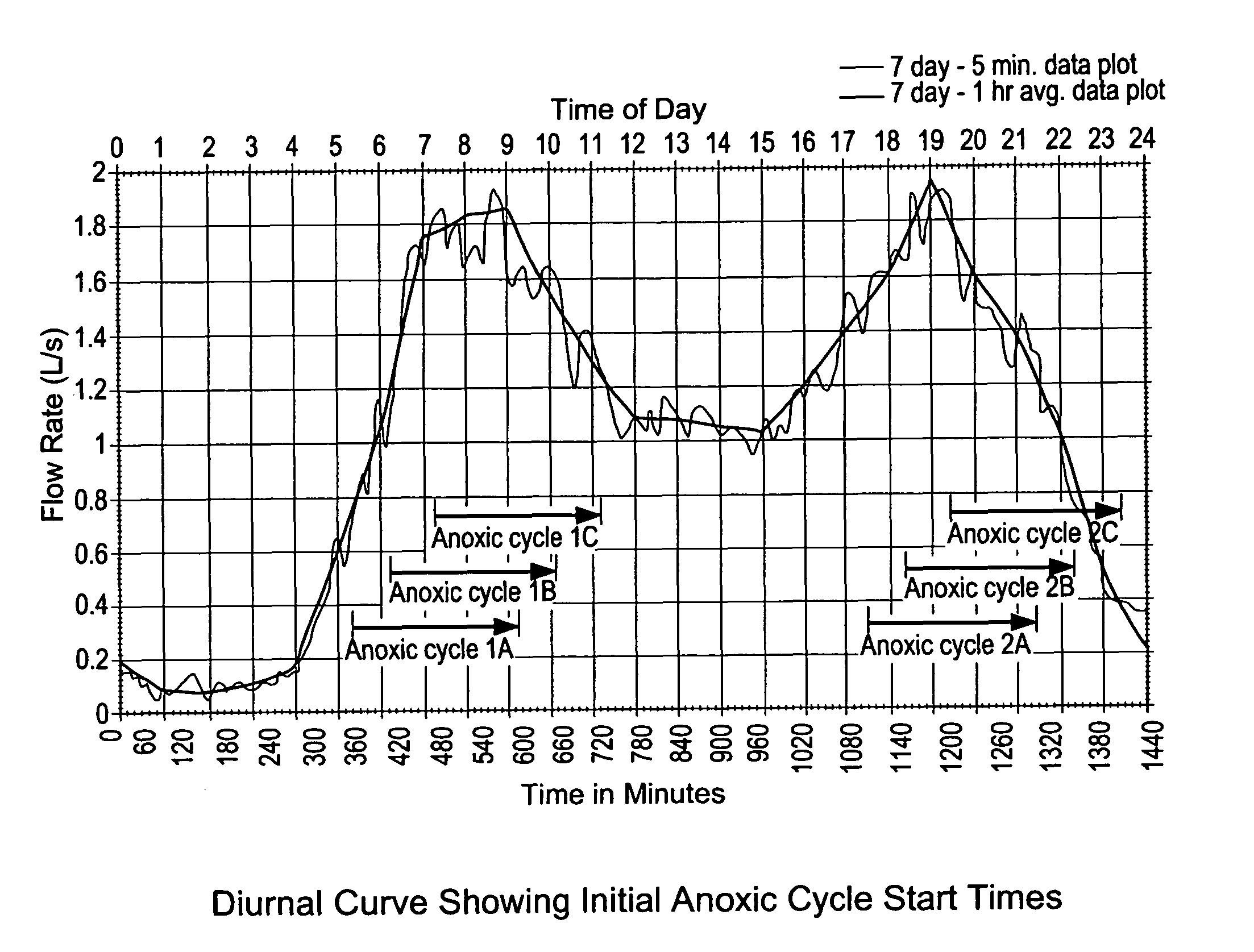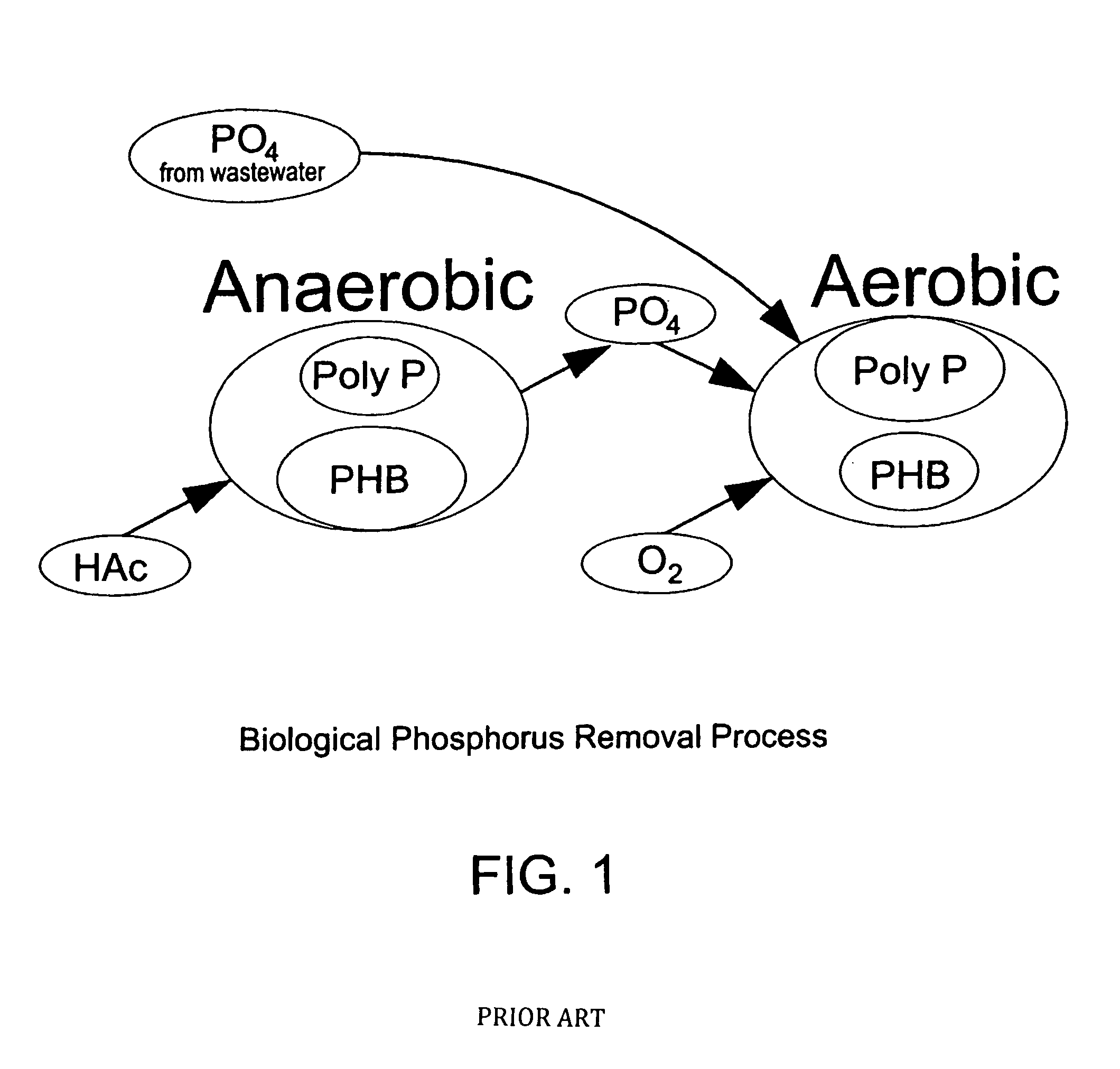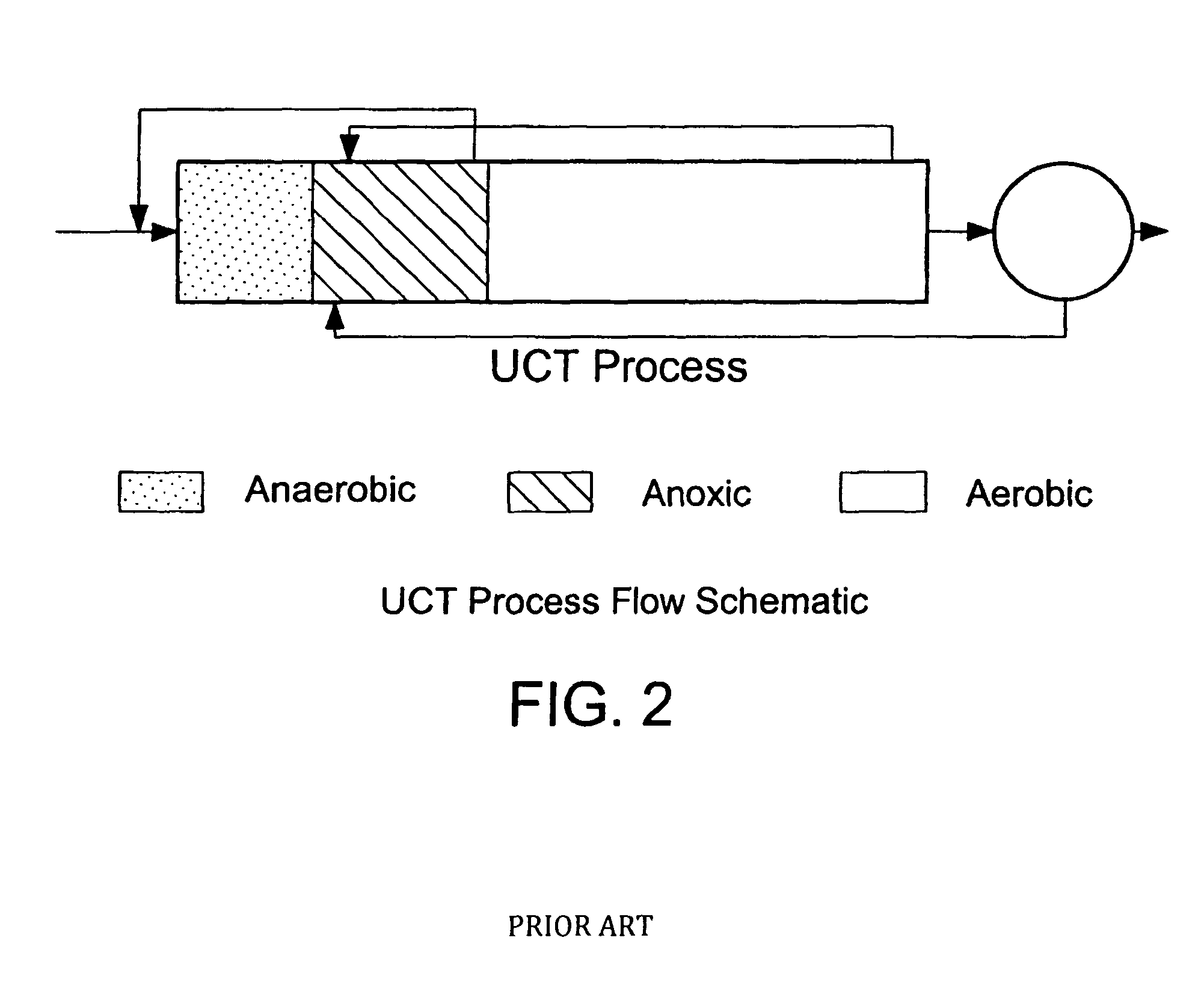Method of biological phosphorus removal with maximum nitrogen removal in wastewater
a biological phosphorus and wastewater technology, applied in the direction of biological water/sewage treatment, water treatment parameter control, sustainable biological treatment, etc., can solve the problems of microbial community in the system, inability to effectively recover the phosphorus from chemical precipitates removed using metal salts, and severe methodological limitations in research on the microbiology of these treatment processes
- Summary
- Abstract
- Description
- Claims
- Application Information
AI Technical Summary
Benefits of technology
Problems solved by technology
Method used
Image
Examples
Embodiment Construction
[0034]The innovative process control system of the present invention can be applied to BNR treatment process designs consisting of one or more anaerobic zones followed by at least two activated sludge reactors operating in parallel. The technical description of the innovation will be provided here by way of example, however, it should be noted that many other similar process configurations could be utilized in applying this technology. FIG. 5 shows a flow schematic with an anaerobic zone followed by three single stage Oxic / Anoxic reactors operating in parallel. Following the Oxic / Anoxic reactors would be one or more secondary clarifiers.
[0035]A key objective of the present invention is to provide a new innovative process control system designed to achieve the maximum enhanced biological phosphorus removal while at the same time maximizing energy efficient nitrogen removal. The control system of the present invention is based on a set of algorithms which form a logical model which wi...
PUM
| Property | Measurement | Unit |
|---|---|---|
| time delay | aaaaa | aaaaa |
| Oxygen-Reduction Potential | aaaaa | aaaaa |
| mass | aaaaa | aaaaa |
Abstract
Description
Claims
Application Information
 Login to View More
Login to View More - R&D
- Intellectual Property
- Life Sciences
- Materials
- Tech Scout
- Unparalleled Data Quality
- Higher Quality Content
- 60% Fewer Hallucinations
Browse by: Latest US Patents, China's latest patents, Technical Efficacy Thesaurus, Application Domain, Technology Topic, Popular Technical Reports.
© 2025 PatSnap. All rights reserved.Legal|Privacy policy|Modern Slavery Act Transparency Statement|Sitemap|About US| Contact US: help@patsnap.com



